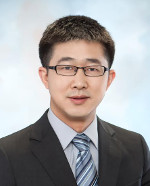IEEE Blockchain Technical Briefs - March 2019
A collection of short technical articles
From Block-based to Blockless: A Paradigm Shift Towards Blockchain Interoperability
By Jiang Xiao; Xiaohai Dai; and Hai Jin, School of Computer Science and Technology, Huazhong University of Science and Technology, China
Today, a brand-new age of ‘Web 3.0 era’ —sharing and unleashing the Internet of value—has begun. Blockchain technology holds the promise of being the trust machine in ‘Web 3.0 era’. It is foreseeable that there will be a significant number of blockchain systems launched to disrupt all sectors of our life, such as Bitcoin, Ethereum, IOTA, Swarm, etc. In this light, ‘blockchain interoperability’ is perceived as the prominent characteristic of facilitating the interactions amongst different blockchains (i.e., heterogenous or homogeneous) to empower the future ecosystem. A broad range of scenarios for exploring such interoperability include transfer of cross-chain digital assets, recommendation of digital currency, synergy of distributed storage, real-time cross-chain liquidation, identity authentication of users with multiple roles, cross-chain data share, cross-chain certification and so forth.
Astraea: A Decentralized Blockchain Oracle
By Ryan Berryhill and Andreas Veneris, University of Toronto
The idea of a public blockchain was first conceived to prevent double-spending while processing monetary transactions in a peer-to-peer network. In its original application, it allows a set of quasi-anonymous and mutually-distrusting parties to reach consensus on the ordering of monetary transactions. It has since been extended to other applications including execution of state machines (i.e., software programs) called “smart contracts” in a decentralized fashion. Smart contracts have a major inherent limitation, as they can only operate on data that is on the blockchain. As a result, trusted entities called oracles attest to external data so as to bring it onto the blockchain. Existing oracles typically do not provide robust guarantees on the accuracy of this data. Trusted oracles are therefore at risk of becoming centralized points-of-failure for decentralized applications that depend on them. This isn't a major issue when the external data can be proven correct either cryptographically (such as data from another Proof-of-Work blockchain), or computationally (such as the outcomes of computations that are infeasible to perform on as Ethereum). However, most real-world facts present a challenge for existing oracles.
Towards Advanced Artificial Intelligence using Blockchain Technologies
By Jean-Louis Marechaux, IVADO Labs
A blockchain is a peer-to-peer network based on a shared distributed ledger, with self-executing business rules (smart contract), and where information is validated through a consensus mechanism. Information logged in a blockchain can never be modified or erased (the immutability aspect of a blockchain). New blocks created over time are digitally signed and added to the end of the chain. A blockchain can be public (anyone can join the network) or permissioned (only vetted participants are accepted). Multiple industries are considering blockchain to address some of their pain points that are difficult to solve with other technologies, specifically around the management of trusted transactions. The potential of blockchain is huge, but most obvious use-cases are around collaboration, traceability, automation, and security.
Enhance Generalized Exchange Economy Using Blockchain: A Time Banking Case Study
By Xuheng Lin, Dept. of Electrical and Computing Engineering, Binghamton University, SUNY; Ronghua Xu, Dept. of Electrical and Computing Engineering, Binghamton University, SUNY; David K. Hwang, Graduate Institute of Building and Planning, National Taiwan University; Yu Chen, Dept. of Electrical and Computing Engineering, Binghamton University, SUNY
Time Banking is a generalized exchange economy not based on money, but values everyone’s contribution on the same scale (time expended). Time banking has spread rapidly in recent years. For example, the nonprofit organization, TimeBanks USA facilitates 276 time banks in North America through 27,000 members, as well as in other countries. In time banking system, all members’ time is treated as equal, which allows value created by service exchanges to remain within the local community. Apart from the obvious benefit of allowing people without money or a job to participate in value creation, a time bank creates opportunities for new relationships to form and strengthens bonds among community members. Time banking itself is also a network, which functions as a platform letting people provide and receive services from each other by donating their time. Generally, it does not involve real money. One simple example is that one person can hire another one for massaging for one hour. Then, the masseur earns one hour credits and next time, the masseur can spend the credits to hire other people to work for him/her for one hour.
2018-2020 IEEE Blockchain Technical Briefs Editorial Board
Subscribe to the IEEE Blockchain Technical Briefs
Join our Blockchain Technical Community and receive our Technical Briefs by email.
IEEE Blockchain Technical Briefs Editorial Board
Gora Datta, FHL7, SMIEEE, SMACM, Managing Editor
2024 Editorial Team
Justin Y. Shi, PhD, Editor-in-Chief
Boleslaw K. Szymanski, PhD
R.L. Shankar, PhD
Imran Bashir
Nicolae "Nicu" Goga, PhD
Constantin “Viorel” Marian, PhD
View the 2023 IEEE Blockchain Technical Briefs Editorial Board
View the 2022 IEEE Blockchain Technical Briefs Editorial Board
View the 2018-2020 IEEE Blockchain Technical Briefs Editorial Board
Past Issues
Read the top five most popular IEEE Blockchain Technical Briefs articles.
Read more (PDF, 731 KB)























